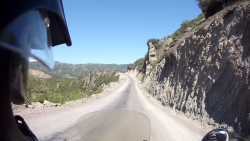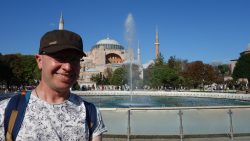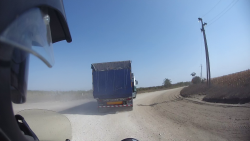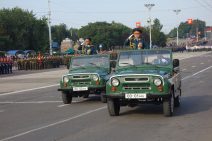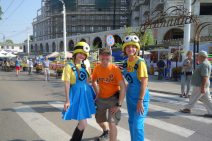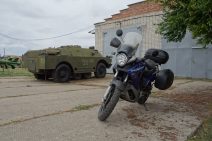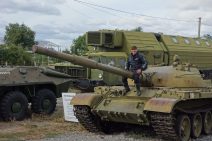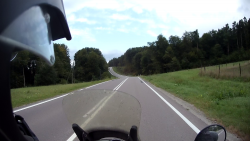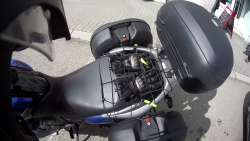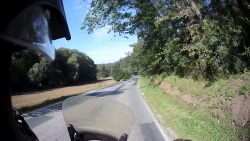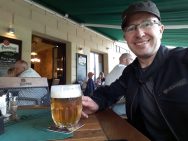Turkey to Germany via Ukraine
Date: August & September 2019
Duration: 3 weeks
Distance: 5,187km
My bike has been shipped to Thessaloniki in Greece, three weeks before I fly there from Frankfurt. After a relaxing weekend, I collect my bike early Monday morning from the logistics company and ride immediately to Gelibolu in Turkey, across the Bosporus from Asia.
I take the ferry the following morning to Asia, then commence my ride to Istanbul from where I will begin my return journey to Germany.
My stay in Istanbul is brief as is my visit to Bulgaria and Romania. Around a week before I flew out to collect my bike, I discovered that the 2nd September is Independence Day in the Pridnestrovian Moldavian Republic, also known as Transnistria.
Pridnestrovia is an unrecognised country that broke away from Moldova soon after the USSR collapsed. It is very small, about 30km across but they maintain their own border controls, currency, police force and army. I am expecting something unusual and slightly soviet from an Independence Day celebration in a land which no other country regards as independent.
In Istanbul I make the obligatory visits to the Hagia Sophia and Blue Mosque, then head back to the EU and overtake a 4km line of traffic waiting to enter Bulgaria.
I follow the Black Sea coastline through Bulgaria and Romania, stopping overnight in Tsarevo (Царево) and Varna (Варна) before I hit the Danube delta, where I cut inland towards the Moldovan border crossing, taking a ferry across the Danube.
After a rough night in Galați, beside the river, I head immediately into Moldova riding towards Pridnestrovia. The roads are the worst I have experienced since my travels in Albania, at times I am riding on gravel despite it being a trunk road classification.
I stop once in Moldova to refuel, as I have Pridnestrovia (Transnistria) in my sights. After about six hours I reach the small border crossing, have my passport checked and pay €4 for a vignette. I receive no stamp in my passport but instead a stamped piece of paper, which I will require when I exit and for the hotel where I will stay.
It’s the afternoon of 1st September and the Independence Day preparations are well underway. October 25 street has already been closed to traffic. While wandering around the city I encounter a few tourists from UK and Australia, who are surprised that I was able to ride across the border unescorted, as if Pridnestrovia is a closed communist state.
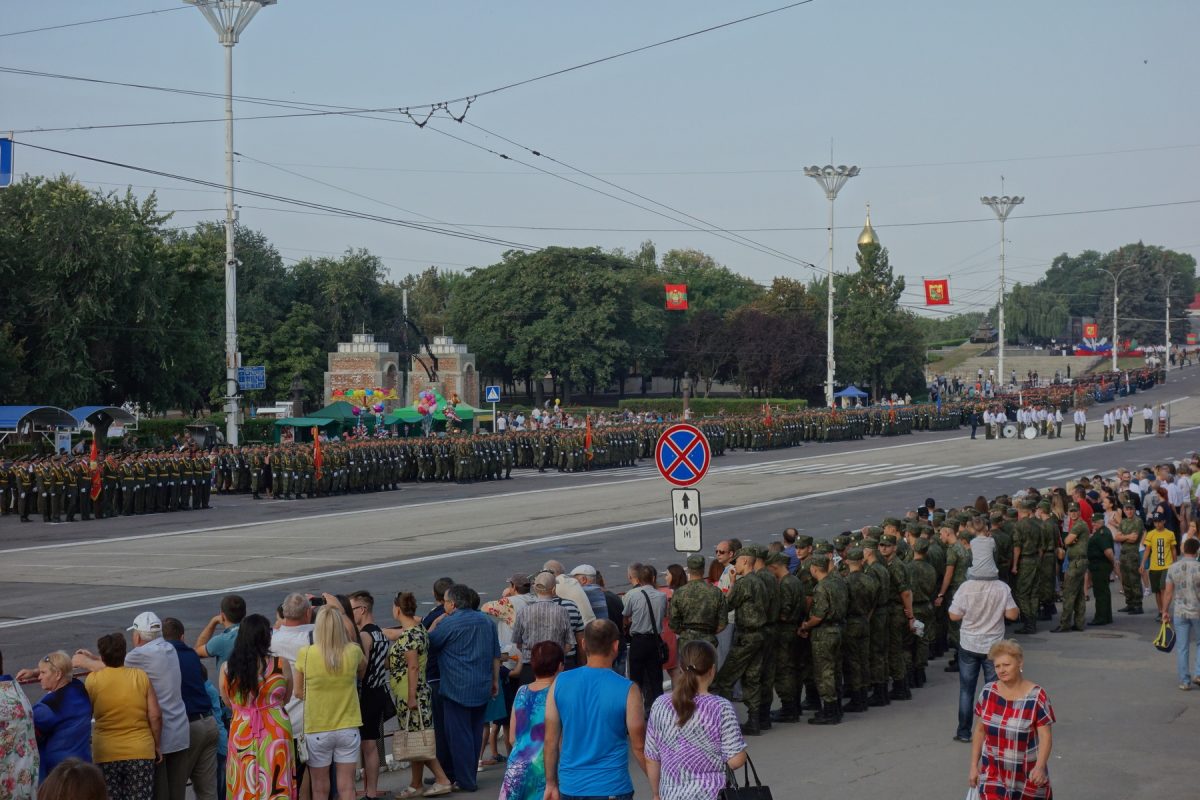
The military parade starts early on the 2nd and the streets of this small capital city are already lined with people several deep including just a handful of tourists. The parade lasts about one hour, sadly there are no tanks in the procession, they’re parked on a side street where kids climb on them.
Following the parade is a carnival all the way up October 25 street. There are numerous people in historic dress, others in fancy dress and a couple on stilts. Several stages have live performances and of course there’s plenty of food and drink.
By mid-afternoon things have quietened down until the evening party in the parade ground. In the large crowd in front of the stage there’s a guy waving two flags; the Pridnestrovian and Russian flags – which tells you everything you need to know about national identity here.
The next stop on the tour is back at the Black Sea, in Odessa (Оде́са). I soon hit the Ukrainian border and after a short delay I’m in my seventh country.
One thing I’m thankful for is that I have all the documentation I require for this trip. Previously when living in Ireland getting an insurance green card for travelling in Europe outside the EU was difficult and only a few countries were included. Now living in Germany, every country I visit on this trip is included on my Green Card which is valid for five years. In fact, the only countries crossed out and not covered are Morocco, Tunisia and Iran.
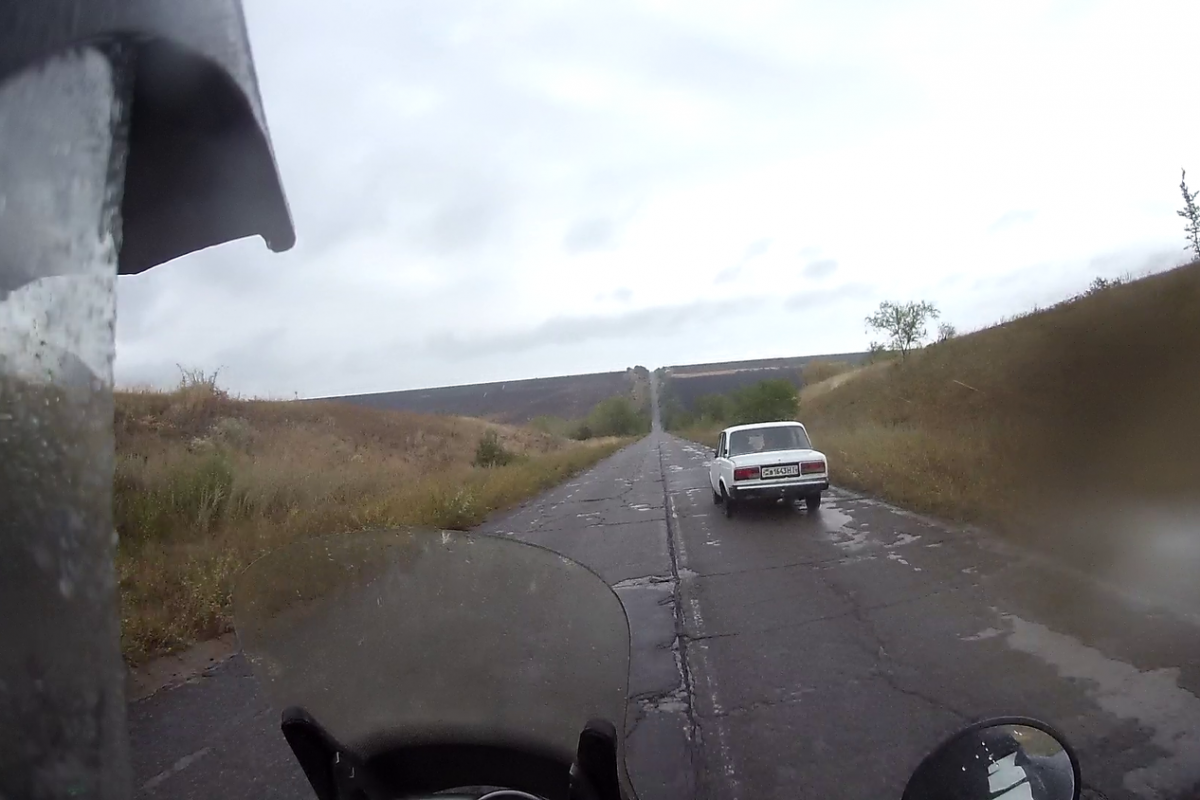
Geographically uninteresting, this area of Ukraine is flat and the roads are straight, if somewhat lumpy. Odessa pulls me in and is one of two large cities on my plan for Ukraine. I have most of the afternoon in Odessa which gives me the opportunity to see the Potemkin Steps and then a beer beside the Black Sea.
Over the following days I plan to work my way around to Львів (Lviv). The most direct route would traverse Moldova but I will stay entirely within Ukraine.
I head north on the motorway towards Kiev, turning off towards Первома́йськ (Pervomaisk) on a road which the map indicates is a major highway. It is in fact mostly broken up concrete. My bike is quite stable on it if I ride at around 80kmh, unfortunately the cars and trucks are travelling at around 40-50 so a few tricky overtakes are required, tricky due to the surface as overtaking on straight roads is not usually an issue.
About 20km north of Pervomaisk is another highlight of this trip, this time a museum. The Музей ракетних військ стратегічного призначення (Strategic Missile Forces Museum) is a former nuclear missile launch site, and still houses an ICBM and much more military hardware.
The site has 10 missile silos and in the past controlled many more nuclear missiles around the region, including mobile launchers. There is one such mobile on site, a train from which an ICBM could be launched – mobile launchers would have been far harder for the US to hit during their first strike.
There is an 11th silo going about 50m into the ground, which houses the war-time control room. The top ten floors house classified equipment and is off-limits to tourists. I am taken down through an access tunnel to a lift along with two other tourists from Israel, where we descend to the bottom of the control silo.
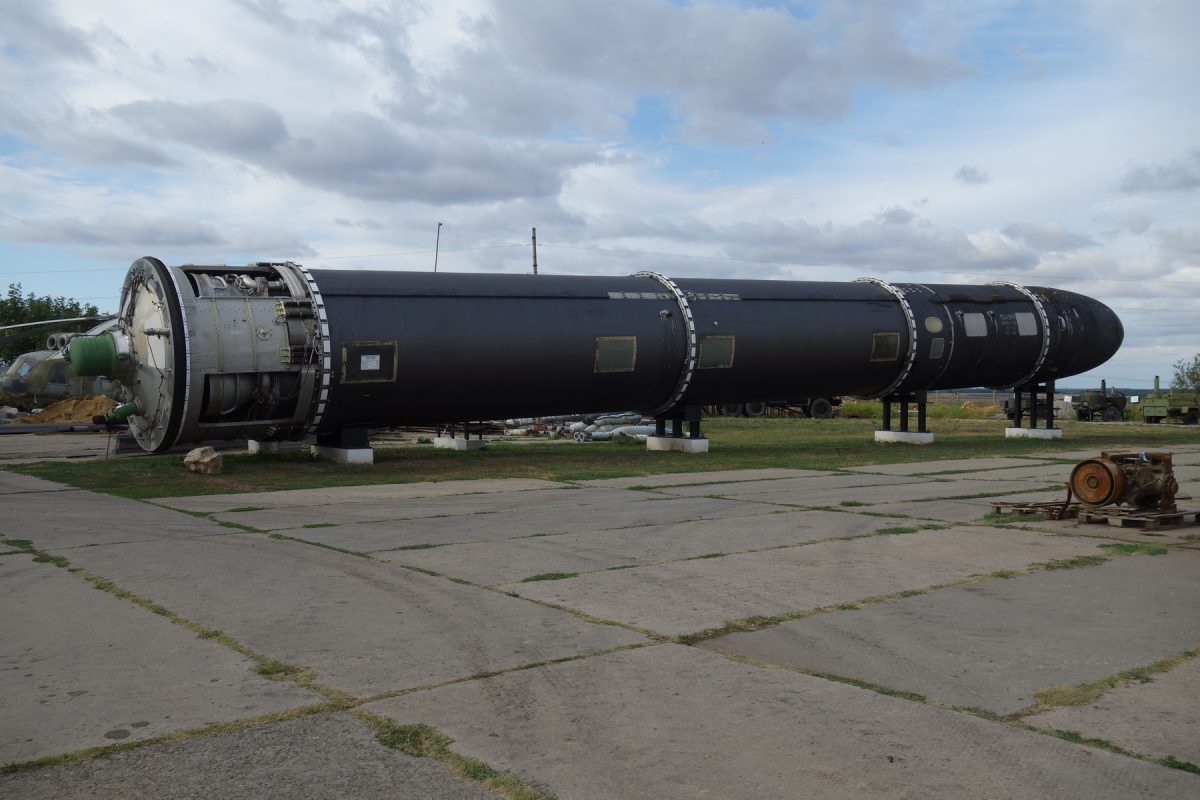
Here is the cramp quarters and control room for war-time. The control room is designed to withstand a nuclear impact and to be sealed off from the outside for six weeks.
There is a dead-mans switch to launch the nukes at predefined targets should no human input be received and contact with Moscow is lost.
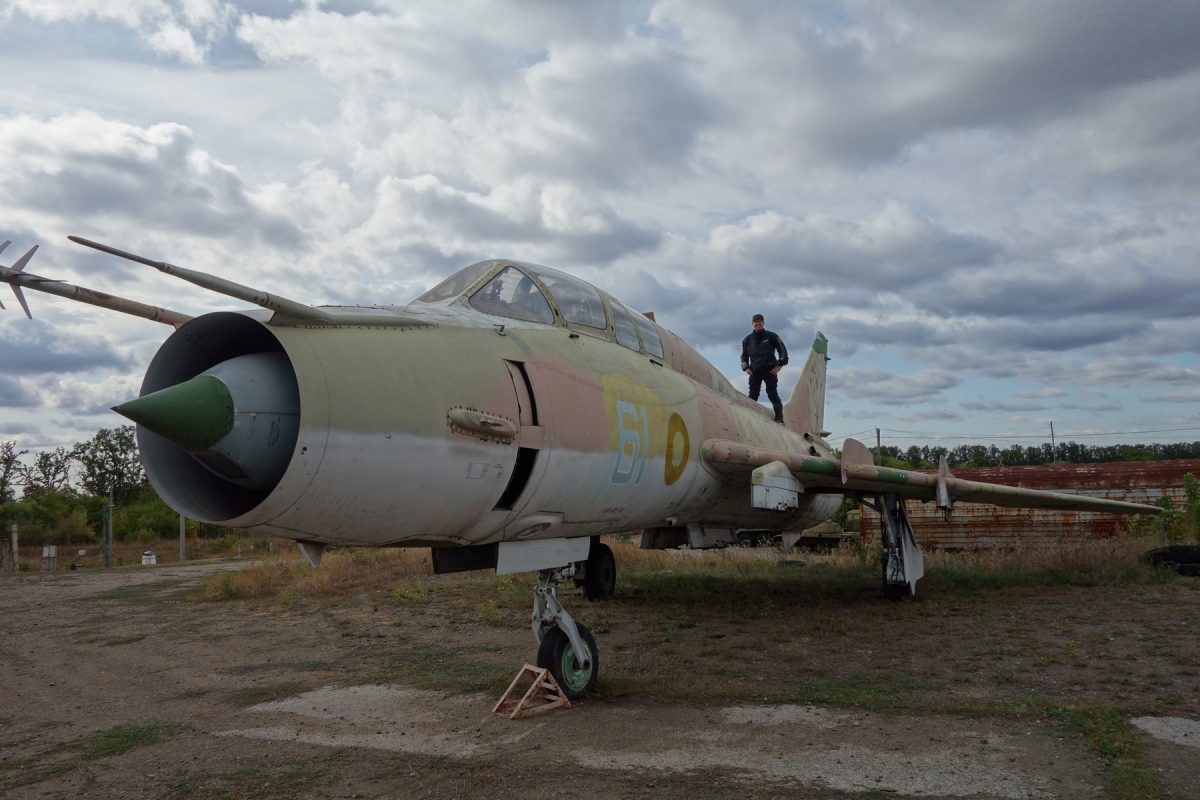
The nuclear missiles have been returned to Russia, in exchange for cash and guarantees for the territorial integrity of Ukraine…
After spending the entire afternoon looking at cold war military hardware, I stay locally in Pervomaisk before heading to Lviv (Львів) – two days ride away on often deeply rutted trunk roads.
Entering Lviv it immediately feels different to other places in Ukraine. This is former Habsburg territory and used to be part of Poland. One could think I’m in central Europe.
I have my second day off from riding the bike, the previous day off was in Tiraspol the capital city of Pridnestrovia. Lviv is possibly the most touristic city since Istanbul just ten days ago. Unfortunately my intention to visit the museum of the secret police failed due to it being closed.
Lviv is only a couple of hours from the border with Poland and the EU. I plan just to clip Poland, a mere 150km but it’s another country on the tour.
At the exit border from Ukraine I bump into a couple of Ukrainian bikers who immediately noticed the damaged fork seals on my suspension. We spend the next two hours chatting as we wait in the queue of just four cars to enter Poland. The polish border guard wasn’t happy with my attempt to queue jump.
In Poland and the effects of 15 years of EU membership is immediately apparent. The roads are of near perfect quality and there’s obviously a lot more wealth in the towns and villages through which I pass, compared to those on the other side of the border in Ukraine.
After 2 hours and only barely putting my feet on Polish tarmac, I cross into Slovakia. This time far more rapidly, at a speed of 50km/h.
There are a few towns nearby but they’re small and quiet. I decide to head on to Košice, the largest town in the region and stay the night in the same building as the German Consulate.
I still have four or five days left on the holiday, so I can take my time. Unfortunately I encounter my first and only wet day. Occasionally there’s a break in the weather, and the scenery is terrific. However by the time I make my way to Žilina I am soaked through – gloves, boots, wallet and there’s even water inside my helmet camera.
Žilina itself looks nice, but everyone is sheltering from the rain. I quickly tour the town square before heading myself into one of the pub restaurants.
The following morning I wear my summer gloves, and strap my autumn gloves to the pillion seat to help them dry out. The helmet camera has at least dried out and is working again.
I take the forested hilly route to the Czech Republic. Soon I cross this formerly internal border marked by a small sign and descend through the forest to Valašské Meziříčí where I search for somewhere to change money.
As I have a few days before I need to return home, I confine myself to the back-roads. I had previously highlighted the city of Brno, as somewhere of interest. Pulling-up outside my shortlisted hotel, I encounter the first occasion on this trip where the hotel has no vacancies. Fortunately the hotel across the road has a spare room.
No road trip through the Czech Republic would be complete without a trip to the birthplace of possibly my most favourite drink, Pils. I remain on the back-roads on my way to Plzeň, which is also the most direct way.
Unsurprisingly finding a Pils is not exactly difficult!
Home is directly west, only about 600km but I want to detour via Dresden. It’s a city I have yet to visit. So I head north through numerous small towns and villages back into Germany.


